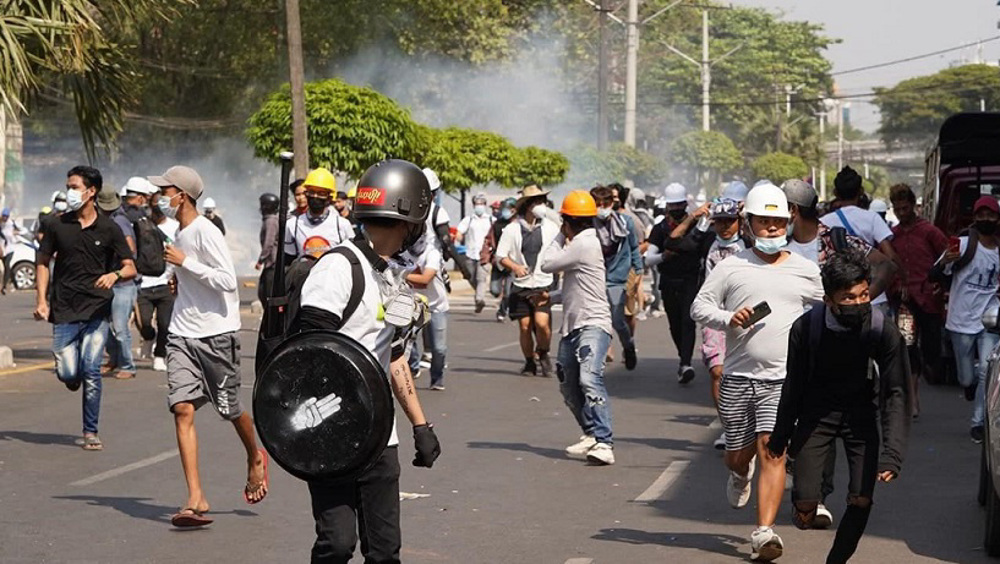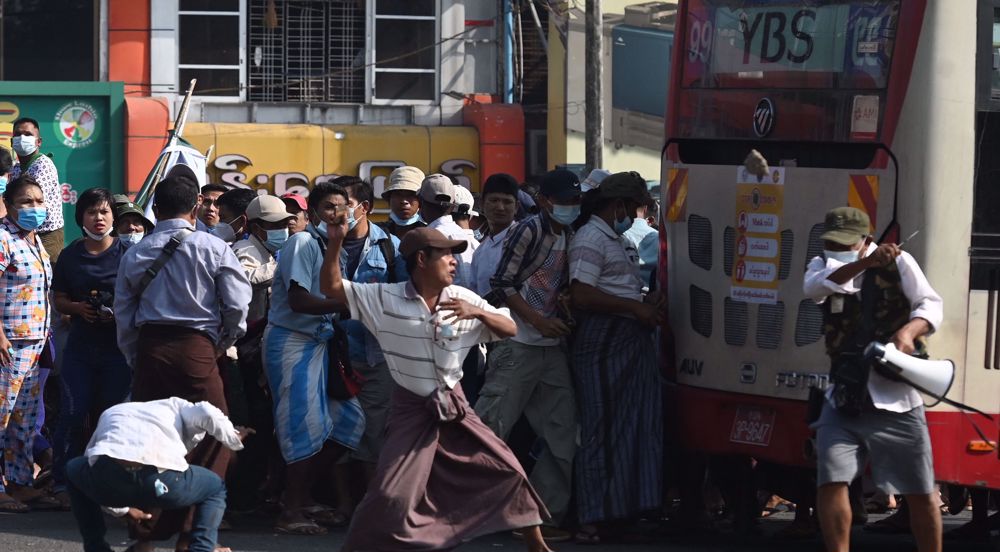Myanmar junta using Israeli, Western equipment to suppress anti-coup protesters: NYT
The military junta in Myanmar is using Israeli and Western equipment in a crackdown on anti-coup protesters in the country, a report says.
The New York Times revealed in a report on Monday that Myanmar’s military generals, who staged a coup last month, have been using Israeli-manufactured surveillance drones, European iPhone cracking devices, and American hacking software to intensify the suppression of their opponents.
Myanmar’s Commander in Chief General Min Aung Hlaing spearheaded a coup on February 1, arresting de facto leader Aung San Suu Kyi as well as other senior figures from the ruling National League for Democracy (NLD) and taking control of the country.
The junta, which has declared a one-year emergency across the country, claims that it seized power after it found fraud in elections held three months earlier that the NLD had won in a landslide.
Since then, hundreds of thousands of people have held numerous protests almost on a daily basis against the coup leaders in the Southeast Asian country, demanding the release of Suu Kyi and the other detainees.
The Times’ report said the protesters had been formerly benefiting from some of the technology that the junta is now using against them, including satellite and telecommunications upgrades, to integrate with the world and make their voices heard.
According to the report, some of those technologies are now being deployed by the Myanmar military, known as the Tatmadaw, to target the opponents of the February 1 coup.
“The military is now using those very tools to brutally crack down on peaceful protesters risking their lives to resist the military junta and restore democracy,” Ma Yadanar Maung, a spokeswoman for Justice For Myanmar, a group that monitors the Tatmadaw’s abuses, was quoted as saying by The New York Times.
The report said evidence showed surveillance technology developed by Israeli, American, and European companies had reached Myanmar despite those sources having banned such exports after the military’s heavy-handed crackdown on Rohingya Muslims in 2017.
“Myanmar’s security forces have triangulated between their critics’ social media posts and the individual addresses of their internet hookups to find where they live. Such detective work could only have been carried out by using specialized foreign technology,” the American daily said, citing experts with knowledge of Myanmar’s surveillance infrastructure.
The Myanmarese junta claims that authorities have been using minimal force to contain the protests. Nevertheless, media reports say at least 20 protesters have died over the days of turmoil. The army says one policeman has been killed in violence.
More than 1,200 people have been arrested, charged, and sentenced since the coup, of which about 900 are still behind bars, according to the Assistance Association for Political Prisoners monitoring group.
The United States, Britain, and others have called for Suu Kyi’s release and the restoration of her government. They have imposed limited sanctions on members of the military and its business links.
Suu Kyi took part in a court hearing via video conference in the capital, Naypyidaw, on Monday.
The NLD leader, who has not been seen in public since her government was ousted, was initially charged with illegally importing six walkie-talkie radios. Later, a charge of violating a natural disaster law by breaching coronavirus protocols was added.
On Monday, Suu Kyi was also charged under a section of a colonial-era penal code prohibiting the publication of information that may “cause fear or alarm” or disrupt “public tranquility,” her lawyer Min Min Soe said.
Her next hearing will be on March 15.
Israeli forces kill 7 more Palestinians in West Bank
Israel’s Netanyahu dismisses military affairs minister Gallant
Hezbollah attacks turn Israel’s Haifa into a ghost town
Iran’s FM meets Pakistani PM, discusses bilateral ties, Israeli atrocities
Iran ramps up gasoline output amid rising demand
UK foreign secretary under pressure over denial of genocide in Gaza
VIDEO | Press TV's news headlines
Hezbollah bombards explosives factory in occupied territories



















 This makes it easy to access the Press TV website
This makes it easy to access the Press TV website